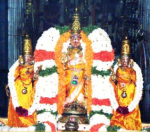Parsurameswar Temple Orissa
.png)
Parsurameswar Temple, located in the East Indian city of Bhubaneshwar, the capital of Orissa, is considered the best preserved specimen of an early Orissan Hindu temple dated to the Sailodbhava period between the seventh and eighth centuries AD. The temple is dedicated to Hindu god Shiva and is one of the oldest existing temples in the state. The temple is believed to have been built during 650 AD in Nagara style and it has all the main features of the pre-10th century Orissan style temples. The temple is one among the Parasumeswar group of temples that are considered the oldest temples in Bhubaneswar.
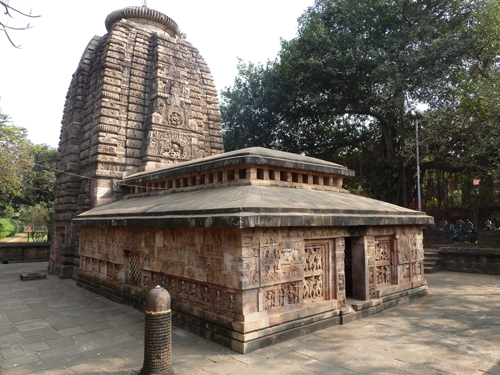
Parsurameswar temple has a vimana, the sanctum, and a bada, the curvilinear spire over its roof, raising up to a height of 40.25 ft (12.27 m). It is the first temple to have an additional structure called jagamohana, compared to the earlier temples that had only the vimana. Though the temple is a dedicated to Shiva, it contains sculpted images of Sakta deities, which are otherwise part of Sakta temples. The temple is the first among Bhubaneswar temples to have depiction of Saptamatrikas images, namely, Chamunda, Varahi, Indrani, Vaisnavi, Kaumari, Sivani and Brahmi. The temple, in modern times, is maintained and administered by the Archaeological Survey of India (ASI) as a ticketed monument. Parasurashtami is the major festival celebrated in the temple during June–July every year.
History
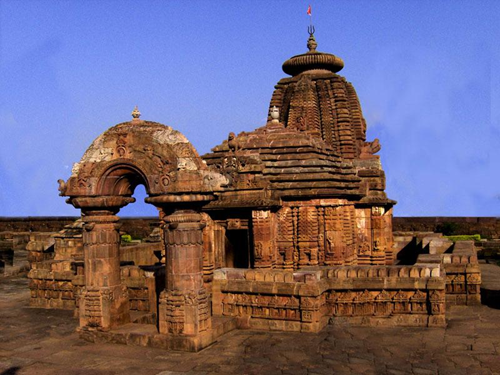
Parsurameswar temple is one the oldest existing temples in Bhubaneswar. The temple is the one of the Parasumeswar group of temples that are considered the oldest temples in Bhubaneswar. Parsurameswar temple is the first temple to have an additional structure called jagamohana (hall of worshipers) added its structure compared to the earlier temples that had only the vimana (sanctum). The carvings of the temple include a variety of fruits, flowers, birds and animals depicted in scenes and parts of designs. The floral design trailing from the tail of a bird is common between the temple and the ones in Vaital Deula, while the motif of vase and flowers is common between the temple and the ones in Mukteshwar Temple.
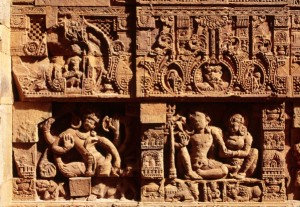
As per some historians, Parsurameswar temple is believed to have been built in the early 8th century A.D., following the initial set of Satruguneswar, Bharateswar and Lakshmaneswar temples of the late 7th century, but historian K.C.Panigrahi places the date as 650 A.D. Fergusson believes that the temple might have been initiated at around 500 A.D. The mid-seventh century date is agreed by most scholars based on style and the presence of the eight planets which appear over the door to the inner sanctum as the later temples are believed to have nine planets.
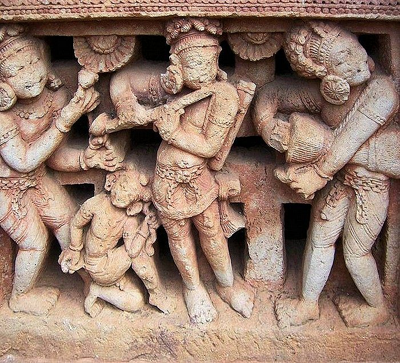
Parsurmeswar temple was built by the Sailodbhavas, who had Shiva as their family deity. The Sailodbhavas also respected the Sakta elements of different gods and depicted Sakta images on the walls of the temple. The temple was repaired in 1903, with some changes in the roof of the inner sanctum, whilst retaining most of the original structure. Being located in the eastern coast, the temple, along with the other Orissan temples were not much affected by the Muslim invaders during the 12-13th centuries. In modern times, the temple is maintained and administered by the Archeological Survey of India (ASI) as a ticketed monument.
Architecture
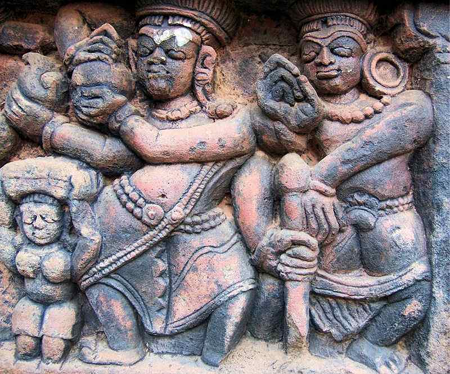
The Orissan temples have two parts namely the sanctum, called deul or vimana and the other is place from where pilgrims view the sanctum, called jagamohana. The initial deul temples were without the jagamohana as seen in some of the older temples in Bhubaneswar, while the later temples had two additional structures namely nata-mandapa (festival hall) and bhoga-mandapa (hall of offerings). The vimana is square in plan and the walls are mottled by portions (called rathas or pagas). The vimana has a curvilinear tower (called bada) in the form of a pyramid composed of horizontal planes. The vimana (sanctum) of the temple measures 9.875 ft (3.010 m)*9.75 ft (2.97 m) from the inside, 19.75 ft (6.02 m)*21 ft (6.4 m) from the outside and has a height of 40.25 ft (12.27 m). Amalaka (also called mastaka), a stone disk with ridges on the rim, is placed over the bada (tower) of the temple. The jagamohana is rectangular in shape and has a two element sloping roof with clerestory windows between them. The jagamohana (assembly hall) measures 24.9375 ft (7.6010 m)*18.33 ft (5.59 m) from the inside and 29.33 ft (8.94 m)*28.5833 ft (8.7122 m) from the outside. The latticed windows are classifed as pata jali where perforations are square or rectangular in shape. In addition, there are trellised windows having slabs of stone sculptures depicting dancers and musicians. Light enters the interior through doors and the latticed windows. The junction point of the deul and the jagmohana is not a clean formation, leading some scholars to postulate that the porch was added at a much later date. But it is attributed to the primitive technology of building. The building methods of the structures involved burying the completed portions in successively higher layers of earth and building inclined planes up to which heavy pieces of stone were dragged. The temple is one of the earliest examples of Nagara style of architecture that emphasises vertical structure as with subsequent temples like Mukteswar, Lingaraj and Rajarani temples in Bhubaneswar and Sun Temple at Konark.
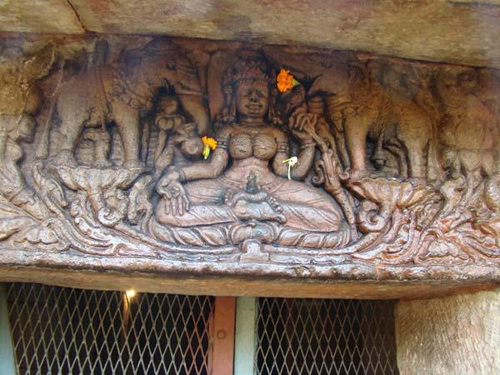
There are grotesque figures of vetalas (ghosts) on the pilasters of jaga mohan and on the faces of vimana of the temple. The figures of nagas(male serpant) and nagins(female serpant) and other females show many graceful but chaste poses. Pilgrimage is the theme of many of the scenes on the vimana. The other notable descriptive representation on the vimana is the hunting scene above the central niche on south, where stags are depicted running away from a hunter. On the outermost frame around the latticed window of the jaganamohana, delightful scenes of monkeys playing all manners of pranks is depicted.The vimana of the temple is a triratha with a distant semblance of a Pancharatha as evident from the projecting niches flanking the central projection. The bada of the vimana abruptly starts from the talapatna or pavement which consists of three elements instead of the usual five and encloses a parallelopiped instead of the usual cubic garbhagriha. Other interesting carvings are those of Shiva throwing down king "Ravana," who is seen trying to uproot Mount Kailasa, the abode of Shiva.
Religious significance
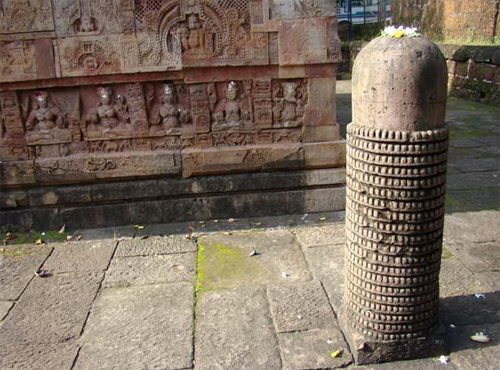
Parasurameswar represents Shiva as the lord of Parasuram, one of the avatars of Vishnu. As per Hindu legend, the temple derives its name from the penance of Parasuram and the resultant grace of Shiva. The temple gives the earliest representation of six armed Mahisamardini Durga image. From chest upward the image is sculpted with headdress, karna kundala (ornament), mala (garland) and kankana (anklet). Durga is seen holding a sword in the upper left hand while in the upper right hand, she is seen pressing the face of the demon buffalo. In middle left hand, she is seen piercing the trisuhla (trident) on the neck of the demon, while in lower left hand she holds a pointed weapon. On the right middle hand she is seen holding Khetaka while in the lower right hand she holds a bow. A similar image of Durga is found in the Vaital temple, which is a famous Sakta center. Though the temple is a Saiva shrine, it contains the images of numerous Sakta deities as Parsvadevatas sculpted on its walls. The temple is the first among Bhubaneswar temples to have depiction of Saptamatrikas images, namely, Chamunda, Varahi, Indrani, Vaisnavi, Kaumari, Sivani and Brahmi. The Saptamatrika images are located in between an image of Ganesha and an image of Virabhadra. Except Ganesha, all other images are depicted with their respective vahanas (vehicles). An eight-armed dancing Ardhanarishvara, an image of Siva-Parvati and the images of Ganga and Yamuna are also seen on the wall of this temple. There are also images of Vishnu, Indra, Surya and Yama in the rectangular niches around the base of the porch. A sculpture of Kartikeya riding on his peacock vehicle is present on the southern wall. As with the case of other Orissa temples, the interiors of the temple are not sculpted and left plain. Parasurashtami is the major festival celebrated in the temple on the 8th day of Ashadha (June–July) when the festival image of Lingaraj is taken to the Parasurameswar temple and feasted.

Parasurameswar temple, along with the Rajarani Temple and Vaital Deula prove the existence of Natyasastra tradition during the times. The Devadasis performed in front of the temple and got transferred to the king's palace and later started performing for the general masses. Shiva is sculpted as Nataraja in various tandavas (dance poses) in the temple. According to Hindu legend, Shiva and Ganesha taught dance to Marirambha, an apsaras or dancer from heaven, and the art spread to the later generations






